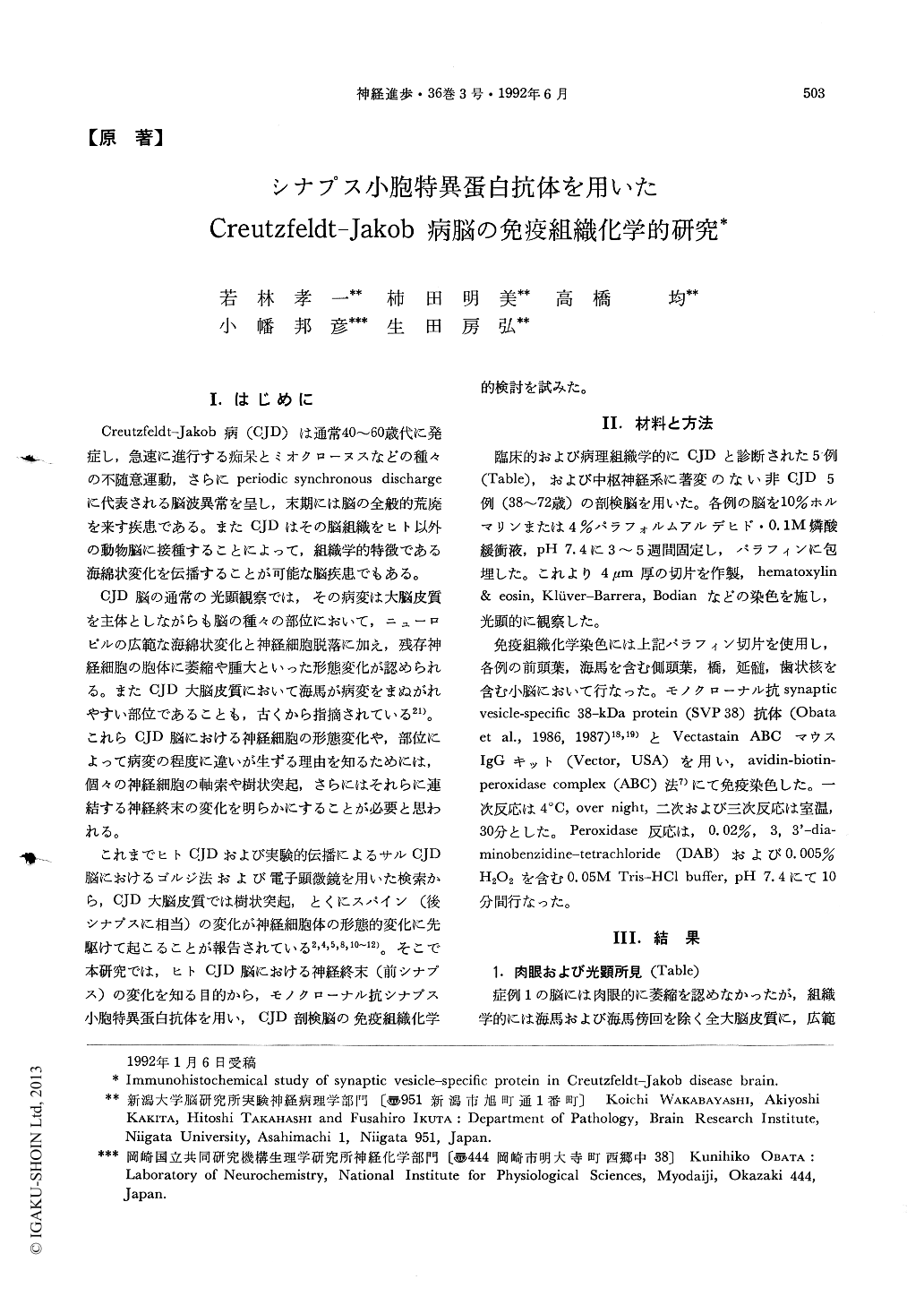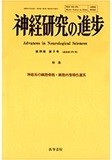Japanese
English
- 有料閲覧
- Abstract 文献概要
- 1ページ目 Look Inside
I.はじめに
Creutzfeldt-Jakob病(CJD)は通常40~60歳代に発症し,急速に進行する痴呆とミオクローヌスなどの種々の不随意運動,さらにperiodic synchronous dischargeに代表される脳波異常を呈し,末期には脳の全般的荒廃を来す疾患である。またCJDはその脳組織をヒト以外の動物脳に接種することによって,組織学的特徴である海綿状変化を伝播することが可能な脳疾患でもある。
CJD脳の通常の光顕観察では,その病変は大脳皮質を主体としながらも脳の種々の部位において,ニューロピルの広範な海綿状変化と神経細胞脱落に加え,残存神経細胞の胞体に萎縮や腫大といった形態変化が認められる。またCJD大脳皮質において海馬が病変をまぬがれやすい部位であることも,古くから指摘されている21)。これらCJD脳における神経細胞の形態変化や,部位によって病変の程度に違いが生ずる理由を知るためには,個々の神経細胞の軸索や樹状突起,さらにはそれらに連結する神経終末の変化を明らかにすることが必要と思われる。
It is well known that in Creutzfeldt-Jakob disease (CJD), the cerebral cortex is mainly affected, although the degree of pathological change may differ from case to case and from area to area in each indivisual. In the present study, we examined the regional density of axon terminals in the cerebrum, cerebellum and brain stem in 5 autopsied patients with CJD and 5 control subjects immunohistochemically, using monoclonal antibodies against synaptic vesicle-specific 38-kDa protein (SVP 38).
In controls, SVP 38-immunoreactive (SVP 38-IR) granular structures were well demonstrated in all regions of the gray matter, except for neuronal cell bodies and processes. In the cerebellum, the molecular layer was stained homogenously, and patchy staining corresponding to the cerebellar glomeruli was observed throughout the granular layer. This positive staining was expected to include axon terminals.

Copyright © 1992, Igaku-Shoin Ltd. All rights reserved.


